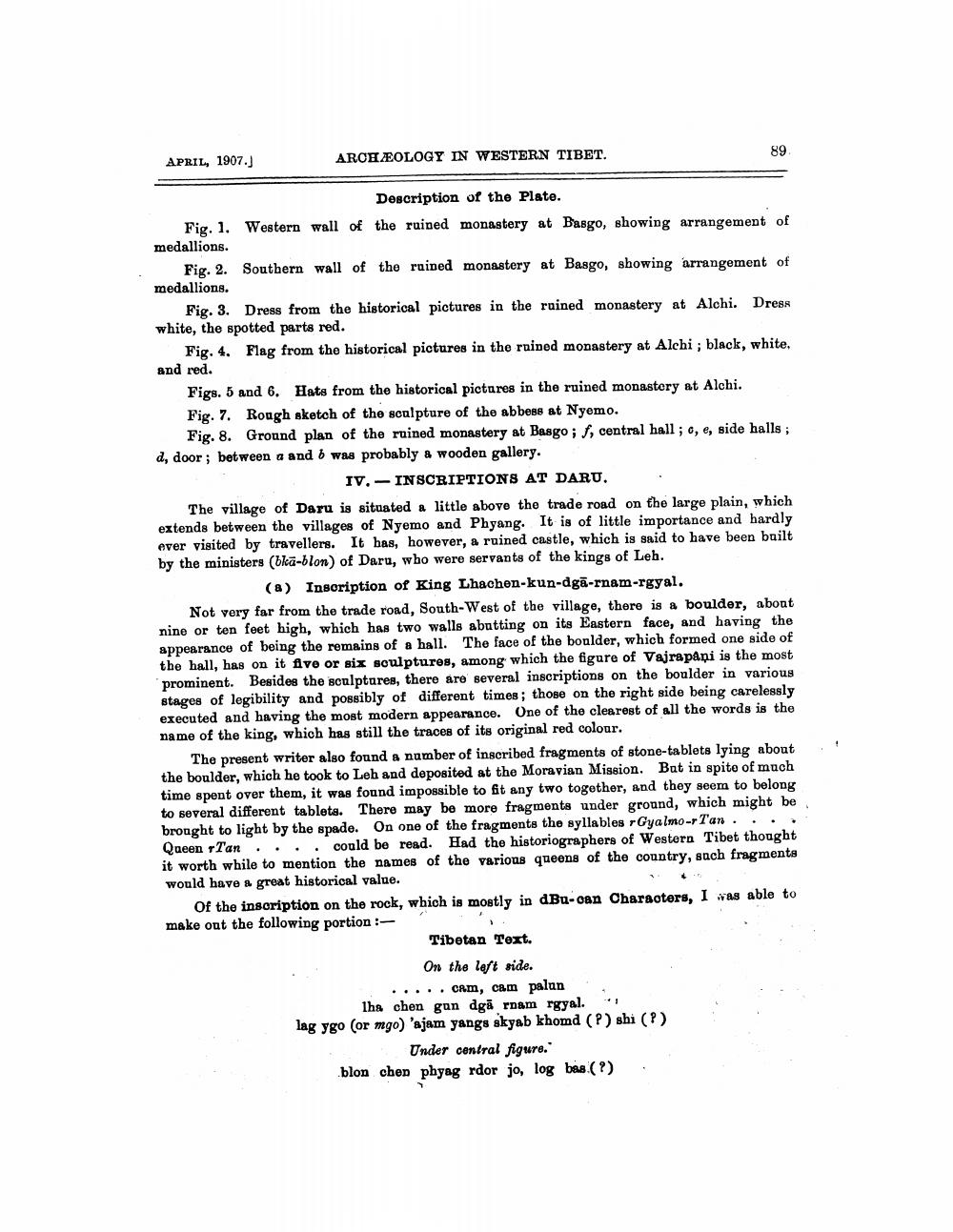________________
APRIL, 1907.)
ARCHÆOLOGY IN WESTERN TIBET.
Description of the Plate. Fig. 1. Western wall of the ruined monastery at Basgo, showing arrangement of medallions.
Fig. 2. Southern wall of the ruined monastery at Basgo, showing arrangement of medallions.
Fig. 3. Dress from the historical pictures in the ruined monastery at Alchi. Dress white, the spotted parts red.
Fig. 4. Flag from the historical pictures in the ruinod monastery at Alchi ; black, white, and red.
Figs. 5 and 6. Hats from the historical pictares in the ruined monastery at Alchi. Fig. 7. Rough sketch of the sculpture of the abbess at Nyomo.
Fig. 8. Ground plan of the ruined monastery at Basgo; , central hall; o, e, side halls; d, door; between a and I was probably a wooden gallery.
IV.- INSCRIPTIONS AT DARU. The village of Daru is situated a little above the trade road on the large plain, which extends between the villages of Nyemo and Phyang. It is of little importance and hardly ever visited by travellers. It has, however, a ruined castle, which is said to have been built by the ministers (bka-blon) of Daru, who were servants of the kings of Leh.
(a) Insoription of King Lhachen-kun-dgā-rnam-rgyal. Not very far from the trade road, South-West of the village, there is a boulder, about nine or ten feet high, which has two walls abutting on its Eastern face, and having the appearance of being the remains of a hall. The face of the boulder, which formed one side of the hall, has on it five or six sculptures, among which the figure of Vajrapani is the most prominent. Besides the sculptures, there are several inscriptions on the boulder in various stages of legibility and possibly of different times; those on the right side being carelessly executed and having the most modern appearance. One of the clearest of all the words is the name of the king, which has still the traces of its original red colour.
The present writer also found a number of inscribed fragments of stone-tablets lying about the boulder, which he took to Leh and deposited at the Moravian Mission. But in spite of much time spent over them, it was found impossible to fit any two together, and they seem to belong to several different tablets. There may be more fragments under ground, which might be brought to light by the spado. On one of the fragments the syllables Gyalmo-- Tan.... Queen TTan...could be read. Had the historiographers of Western Tibet thought it worth while to mention the names of the various queens of the country, such fragments would have a great historical value.
Of the inscription on the rock, which is mostly in dBu-oan Characters, I was able to make out the following portion :
Tibetan Text.
On the left side. ..... cam, cam palun
lha chen gan dgā rnam rgyal. lag ygo (or mgo) 'ajam yangs skyab khomd (P) shi()
Under central figure." blon chen phyag rdor jo, log bas (?)




